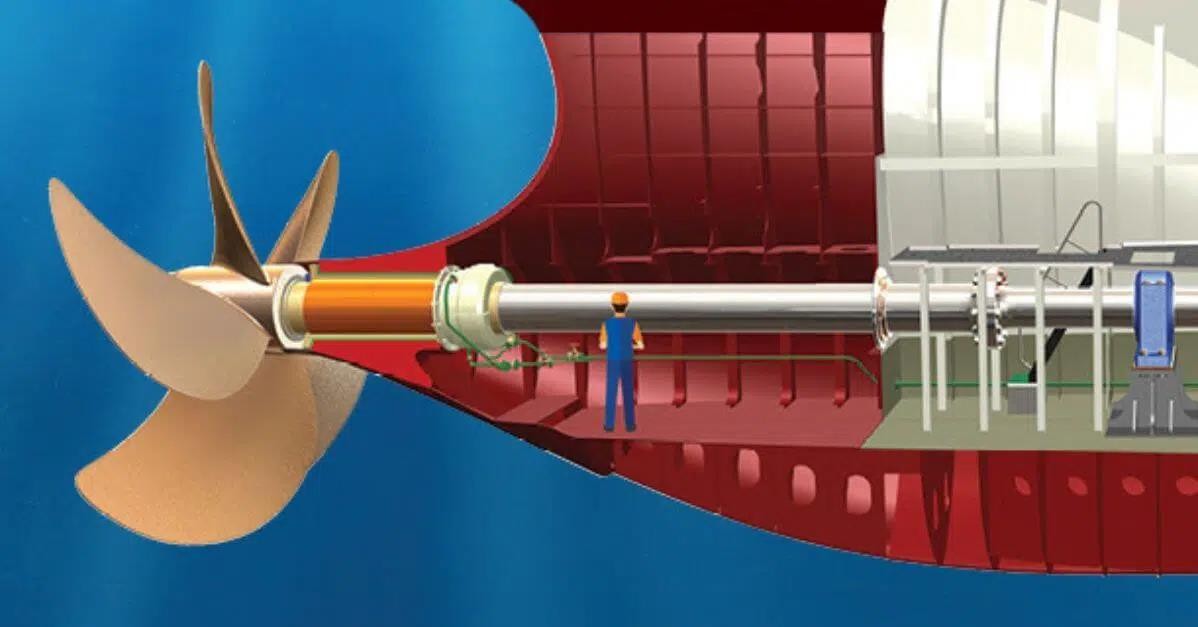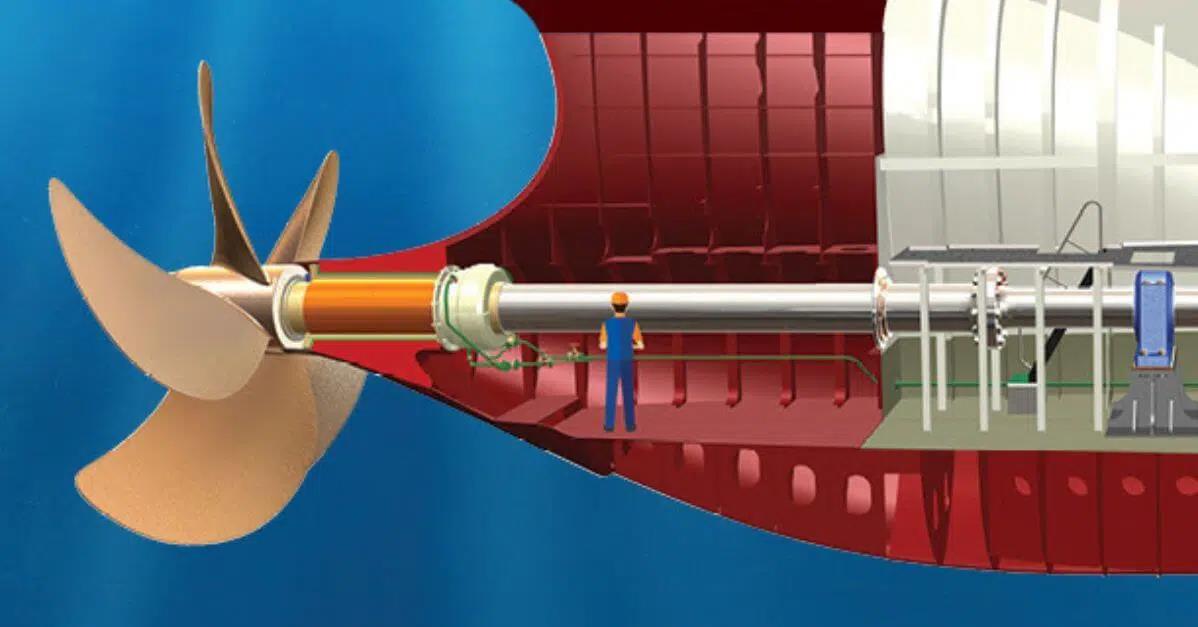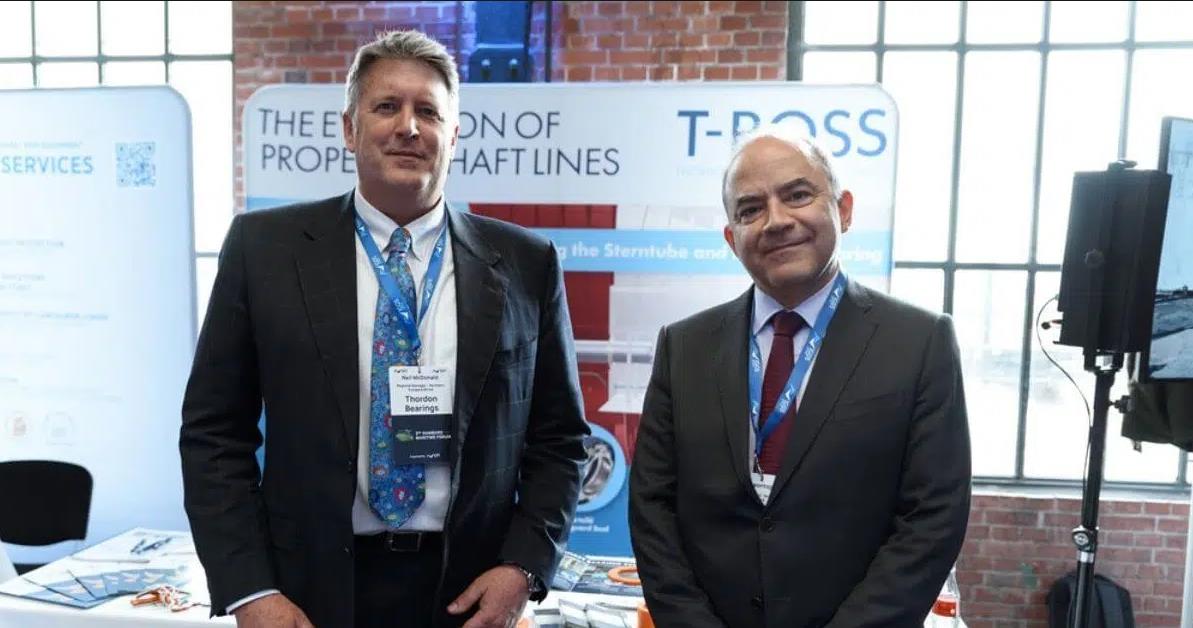蓝海联盟的Chris Leontopoulos表示,未来所有类型的新船都应该没有艉管,而采用海水润滑的螺旋桨轴轴承布置。
Leontopoulos先生最近在汉堡的一个海事行业论坛上发言时表示,由蓝海联盟成员ABS、Thordon Bearing、上海商船设计研究所(SDARI)、瓦锡兰和雅典国立技术大学(NTUA)联合开发的无艉管船设计在商业、运营和环境方面都极具吸引力,“我个人希望未来所有船只都能这样建造”。
ABS负责欧洲、中东和非洲地区技术的副总裁Leontopoulos先生以每年有超过800万升的尾管润滑油污染海洋的惊人统计数据作为演讲的开始,他说,该集团提出的设计干预措施可以提供一种商业和环境最佳的船舶,能够节省数十万美元的运营成本。这是在不改变船体线条或现有船级社规则和规定的情况下进行的。
“我们决定去掉船尾管,通过缩短螺旋桨轴的长度,将原动机移到更靠后的位置,我们不再需要前船尾管轴承。这减少了轴上的摩擦,从而降低了功率损耗,提高了燃油效率并减少了排放。一艘无艉管的船在相同长度的情况下也会有更大的货物空间,”他说。
Leontopoulos先生接着说,使用具有锥形关键设计的海水润滑轴承-使无艉管船成为可能的主要部件-也消除了对船尾密封和轴涂层系统的需求。
无艉管设计的特点是海水润滑轴承,Wärtsilä向前轴密封,水质包和舱壁密封。
当展示了一幅有船尾管和没有船尾管的船的对比图时,技术上的差异立即显现出来。
从本质上讲,该设计在机舱后部,通常用于船尾管的空间内提供了一个干燥的内部检查室。
这个新的空间足够大,可以让工程师在船漂浮时站在里面维护或更换螺旋桨轴部件,它是通过修剪加强筋和在舱壁上开一个口而形成的。
Leontopoulos先生说:“这是一个非常大的优势,因为你不需要将船舶干船坞,也不需要取出轴或螺旋桨来监测和维护海水润滑的轴承和密封件。我们现在可以在船还在运行的时候,在船内部进行这项工作,”
他说,无尾管船还消除了在船的整个使用寿命内重新调整轴的必要性,降低了轴损坏或压痕的风险,这可能会导致大量的停机时间和开支。
在谈到无艉管船的成本效益时,Leontopoulos先生承认,尽管根据轴直径的不同,额外组件的估计资本支出可能会使新造船的成本增加约1万至3万美元,但由于运营支出的减少,投资回报率很快就会提高。这才是真正的经济收益所在。
他告诉与会代表,除了可以立即节省35万美元的润滑油费用外,运营商还可以节省超过100万美元的终身运营成本。
这是基于减少燃料消耗,减少干船坞和维护成本以及相关的收入损失;轴向优化,降低轴承磨损率,提高EEDI;以及货物运载能力的提高。
该安排还将与尾管油污染有关的环境罚款风险降至零。
他总结说:“没有污染风险,没有换油,也不需要干船坞来更换轴承。
更短的轴线和更小的机舱空间增加了货物空间,提高了EEDI等级;没有限制的速度范围,也没有疲劳问题。它完全符合所有现有的规则。”
关于后一点,美国船级社现在发布了《Requirements for Sterntubeless Vessels with Water-Lubricated Bearings》指南,将所有现有的适用设计规则汇集在一份文件中。
ABS还为无艉管船舶设计引入了新的符号,对此,Thordon轴承北欧和非洲区域经理Neil McDonald表示:“蓝海联盟提出的无艉管船舶设计确实是全球航运业的一个里程碑式发展。自从蒸汽推进技术出现以来,船的这一部分就没有改变过。
“只需对艉管空间进行改造,并将油润滑轴承系统替换为水润滑轴承系统,新造船就可以大大提高环境和运营的可持续性,而无需新的船级规则和符号。这是重要的设计干预。”
Chris Leontopoulos认为,第一艘采用Thordon海水润滑螺旋桨轴轴承系统的无艉管船,可能基于SDARI设计,将在未来12个月内订购。
▲Image Credits: BOA
英文原文
Blue Ocean Alliance Unveils Seawater-Lubricated Sterntube-less Vessel Design
Future newbuild ships of all types should be built without a sterntube and with a seawater-lubricated propeller shaft bearing arrangement, according to Blue Ocean Alliance’s Chris Leontopoulos.
Speaking at a recent maritime industry forum in Hamburg, Mr. Leontopoulos said the sterntubeless ship design – jointly developed by Blue Ocean Alliance members ABS, Thordon Bearings, Shanghai Merchant Ship Design and Research Institute (SDARI), Wärtsilä, and the National Technical University of Athens (NTUA) – is so commercially, operationally and environmentally attractive that “I personally hope that in the future all ships are built like this”.
Kick-starting his presentation with the startling statistic that more than eight million litres of sterntube lubricating oil is polluting the oceans annually, Mr. Leontopoulos, ABS’ Vice President, Technology, EMEA, said the design interventions proposed by the group can deliver a commercially and environmentally optimal vessel capable of saving hundreds of thousands of dollars in operational costs. This, without changing hull lines or existing class rules and regulations.
“We decided to remove the sterntube, and by shortening propeller shaft length and moving the prime mover further aft, we no longer needed a forward sterntube bearing. This places less friction on the shaft, resulting in lower power loss, improved fuel efficiency and reduced emissions. A sterntubeless ship also results in a bigger cargo space for the same vessel length,” he said.
Mr. Leontopoulos went on to say that the use of a seawater-lubricated bearing with a tapered key design – the principal component that makes the sterntubeless ship possible – also removes the need for an aft seal and a shaft coating system.
The sterntubeless design features a seawater-lubricated bearing, a Wärtsilä forward shaft seal, a Water Quality Package and a bulkhead seal.
The technical differences were immediately obvious when a graphic was shown comparing a ship with and without a sterntube.
Essentially, the design presents a dry internal inspection chamber aft of the engine room, in the space normally given to the sterntube.
This new space, big enough for engineers to stand up in to maintain or replace propeller shaft components while the ship is afloat, has been created by trimming stiffeners and cutting an opening into the bulkhead.
“This is a very a big advantage because you don’t have to drydock the ship and withdraw the shaft or propeller to monitor and maintain seawater-lubricated bearings and seals. We can now do this from inside the ship while the vessel is operational,” said Mr. Leontopoulos.
The sterntubeless ship, he said, also negates the need to realign the shaft throughout the vessel’s lifetime, mitigating the risk of shaft damage or indentation, which can result in substantial downtime and expenditure.
Going on to reveal the cost benefits of a sterntubeless ship, Mr. Leontopoulos acknowledged that although the estimated CAPEX for additional components could add about US$10,000 to $30,000 to the cost of a newbuild depending on shaft diameter, the ROI is quick given the reduced operational expenditure. This is where the real financial gain is to be made.
He told conference delegates that aside from immediate savings of US$350,000 in lubricating oil, operators could save more than US$1 million in through-life operational costs.
This is based on reduced fuel consumption, reduced drydocking and maintenance costs, and associated loss of earnings; shaft alignment optimization, lower bearing wear rates, better EEDI; and an increase in cargo carrying capacity.
The arrangement also reduces to zero the risk of environmental fines related to sterntube oil pollution.
Summing up he said: “There’s no pollution risk, no oil changes, and no need to drydock to change the bearing.
A shorter shaft line and smaller engine room space increases cargo space and improves EEDI ratings; there is no barred speed range and no fatigue concerns. It complies completely with all existing class rules.”
On that latter point, ABS has now published a Requirements for Sterntubeless Vessels with Water-Lubricated Bearings guide, bringing together in one document all existing applicable rules for the design.
ABS is also introducing a new notation for the sterntubeless ship design, for which the Neil McDonald, Thordon Bearings’ Regional Manager – Northern Europe & Africa, said: “The sterntubeless ship design proposed by the Blue Ocean Alliance is truly a milestone development for the global shipping industry. This part of the ship hasn’t changed since the advent of steam propulsion.
“Simply by remodeling the sterntube space and replacing an oil-lubricated bearing system with one lubricated by water, newbuild ships can be substantially more environmentally and operationally sustainable, without the need for new class rules and notations. It is significant design intervention.”
Chris Leontopoulos believes the first sterntubeless ship with a Thordon seawater-lubricated propeller shaft bearing system, probably based on a SDARI design, will be ordered within the next twelve months.
免责申明:本文根据网络内容整理,如有误差,以英文为准;仅代表作者观点,不代表中国海员之家立场。其真实性及原创性未能得到中国海员之家证实,在此感谢原作者的辛苦创作,如转载涉及版权等问题,请作者与我们联系,我们将在第一时间处理,谢谢!联系邮箱:cnisu@54seaman.com



 联系我们人工客服
联系我们人工客服



















 :1391995811
:1391995811


评论 (0人参与)